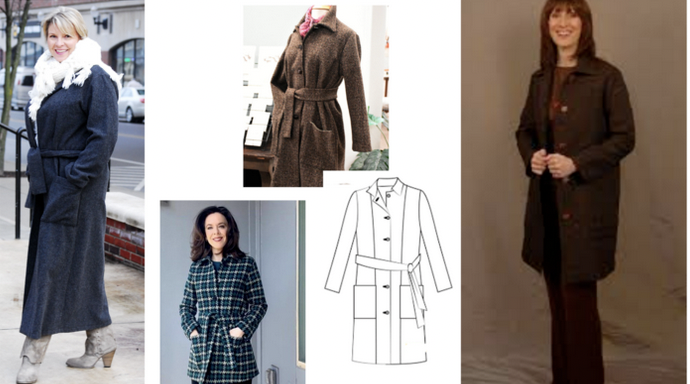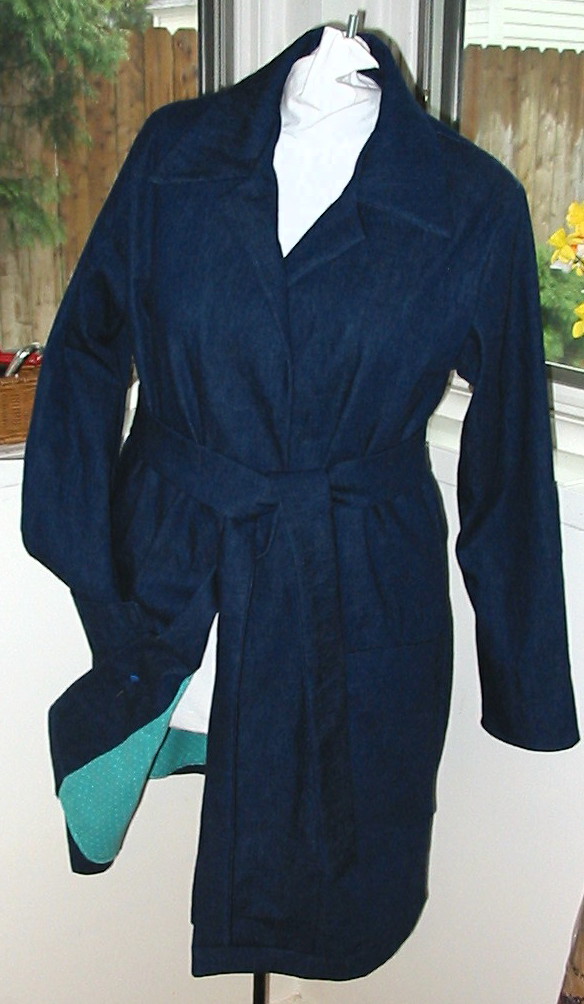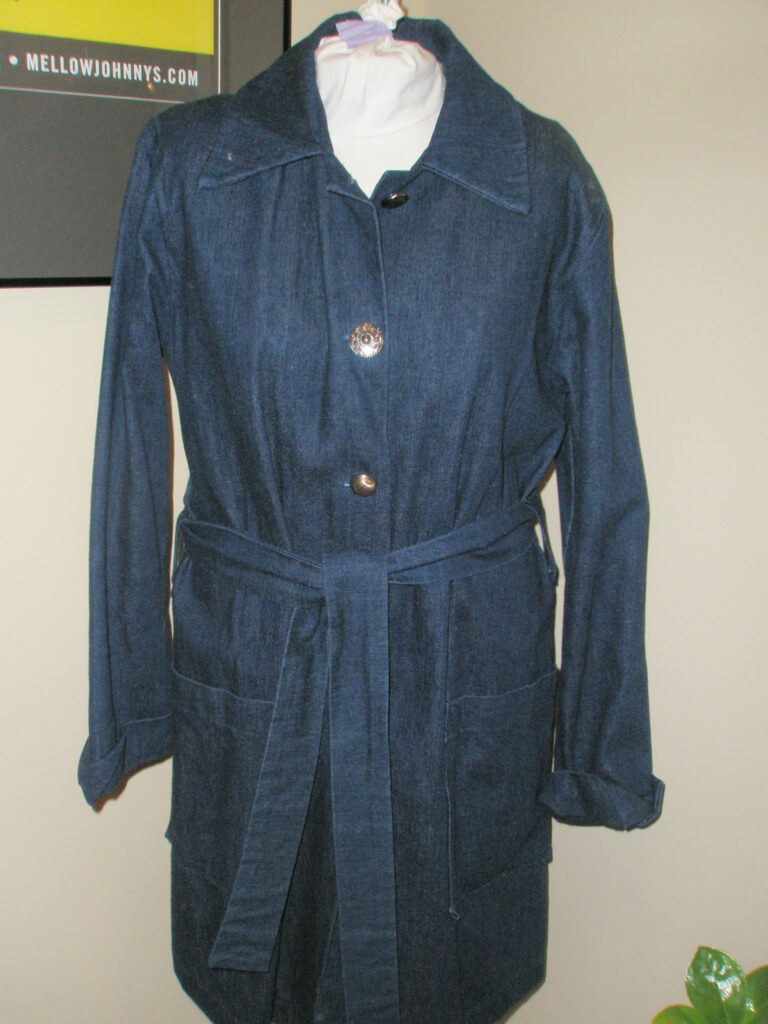My favorite easy coat sewing pattern is called just that – the Easy Coat! This oversized, long or knee length coat is super on trend right now and super EASY to sew – even for beginners. If this is your first coat – lined or unlined – this pattern is easy to sew! It’s by Christine Jonson Patterns, who, in my opinion, does some of the best fabulous jacket and coat drafting (and really, pattern drafting of everything) in the business. She’s not designing sewing patterns any longer, but she still sells her patterns (print and digital) online!
The coat is oversized but not TOO oversized. It has large patch pockets (welt pockets are not EASY, and this is an easy coat.) It has a fully buttoned up collar so you will stay warm (or you can open it up), and it has a belt for both style and cinching out the cold.
The images below show the Easy Coat in action – including several wool ones (courtesy of Christine Jonson Patterns.)



Fabric choices for your Easy Coat sewing
You can make this coat out of almost any fabric suitable for light coats or heavyweight coats – I’ve sewn it in linen and denim and I’ll be making another one in heavyweight wool.
A lining comes with the coat, and my first one, I used a pair of green and white polka dot curtains that I once sewed for my guest bedroom! Super fun! I made my first Easy Coat in denim, in the knee length version, used a mixed matched bag of silver buttons and loved and wore that coat – I still have it, though it’s too small for me now.
My NEXT Easy Coat will be in heavy weight wool coating in a dark aubergine color, with a black flannel back satin lining. I was gifted this fabric and it’s gorgeous and so worthy of a coat of this caliber.
Pro tips for patch pockets on jackets and coats
I LINE all my pockets – I cut a second pocket out of lining fabric, I trim 3/4″ off the top and 1/16″ off the sides and bottom. I then put right sides together, lining up the edges (the lining is smaller than the pocket) and stitch the top, fold the wool side down along the fold line for the pattern, and line up the sides and bottom, leaving an opening at the bottom of the pocket to turn it right side out. The 1/16″ off each side means when stitched, the wool side will roll to the inside slightly and hide the lining when it’s sewn on the coat. I’m not fussy about a sixteenth of an inch, just trim a little away on 3 sides. Once you turn it right sideout, fold the opening edges under, press and they’ll be caught when you stitch it on the coat.
Try the coat front and back on (sew the shoulder seams) and position the pockets where YOU want them before stitching them on. You can hand stitch or machine stitch the pockets. I usually machine stitch mine on.
I’m going to choose the long length coat for warmth. Note, if you live in a cold climate and want a very warm coat, you can use lining fabric that is already prequilted lining fabric like this. If your wool is really heavy you can just use flannel back satin for your lining with the satin side as the “right” side (against you.) Or if you don’t need that heavy of a coat, regular lining fabric (or your former curtains!) will work.
If you’re terrified of sewing buttonholes in a heavy coat, you can send the coat out to have them done for you! Gorgeous Buttonholes will do them for you and ship your coat back to you. You can also use large snaps and hand sew the snaps on for a sleek look on the front of the coat.
A really lovely winter wool coat made in a heavy wool with quilted lining will last you decades. You can refresh your look with a new scarf, hat and gloves. Camel, black, gray are classics, but I happen to have this aubergine (dark warm purple) in my gifted stash and it’s only suitable to become a coat, so a coat it will become!
What about other coats? Oh sure! I also love the Cambria Duster!
The Cambria is another great coat pattern (unlined with some good finishing instructions) and I’ve made this twice in a linen once and a cotton twill once. I’ve threatened to make a cream one a la Meghan Markle/Duchess of Sussex wore a few years back.
